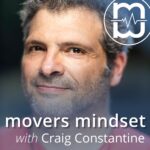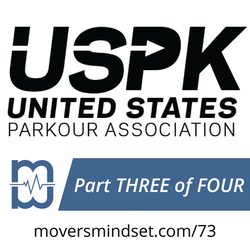
What are the challenges, structures, and opportunities involved in building and maintaining a transparent, community-driven national governing body for Parkour?
Membership dues directly support a transparent, nonprofit structure designed to empower the Parkour community.
This conversation goes into the structure, purpose, and vision of the United States Parkour Association (USPK), a nonprofit organization aiming to unify and support the Parkour community. It discusses the unique governance model involving committees and Special Interest Groups (SIGs), emphasizing the grassroots nature of SIGs as member-driven initiatives addressing both internal and community-specific challenges. Transparency is a cornerstone of USPK’s operations, with open financial reporting and an inclusive process for member contributions to decision-making.
The discussion also touches on the challenges of convincing individual practitioners and skeptics to join the organization, highlighting the importance of proactive involvement to ensure Parkour remains community-led. Broader topics include potential external threats, such as legislative actions by industries like CrossFit and Coca-Cola, and the role of public perception in shaping Parkour’s future. The conversation underscores the urgency of building a robust membership base to drive the organization’s efforts and sustain its mission.
Takeaways
Membership dues — Funding for USPK comes primarily from membership fees, ensuring direct community investment in its initiatives.
Transparency commitment — The organization prioritizes transparency through open financial reports and clear communication with members.
Special Interest Groups — SIGs are grassroots initiatives that empower members to address diverse challenges and innovate within the Parkour community.
Committee structure — Committees focus on specific issues such as build standards and competition, ensuring organizational goals align with community needs.
External legislative threats — The discussion highlights threats from industries and legislation that could negatively impact Parkour’s autonomy and accessibility.
Community involvement — The importance of collective action and shared responsibility in shaping Parkour’s future is emphasized.
Public perception — Outreach and education can positively influence how the public perceives Parkour practitioners.
Grassroots energy — The conversation stresses leveraging the passion of individual practitioners to drive the organization’s growth and impact.
Membership growth — Building a strong membership base is critical for long-term sustainability and influence.
Unified direction — Advocating for aligning individual and collective goals to protect and advance the discipline of Parkour.
Resources
USPK Official Website — Provides information about the United States Parkour Association and membership opportunities.
(Written with help from Chat-GPT.)
— Hello👋 I’m Craig Constantine.
In the Movers Mindset podcast, I talk with movement enthusiasts to learn who they are, what they do, and why they do it. I’m interested in the nature and philosophy of movement and in exploring themes like independence, self-direction, and human excellence. My interests color each conversation and provide some structure to Movers Mindset. But since I like to take the scenic route, every conversation ends up going somewhere unique.
The purpose of Movers Mindset is to create and share great conversations with movement enthusiasts. Each conversation feeds my insatiable curiosity, but I share them to turn on a light for someone else, to inspire them, or to give them their next question.
I appreciate your time and attention, and I don’t take it for granted.
— Thank you!
Want more? Subscribe to the email list for weekly updates—new episodes and archive highlights delivered to your inbox.
I invite you to cultivate a meaningful life—through presence, not pursuit. You can learn more about me and all my projects at, https://craigconstantine.com.
If you like what I’m doing through Movers Mindset, learn more about becoming a patron.
ɕ
